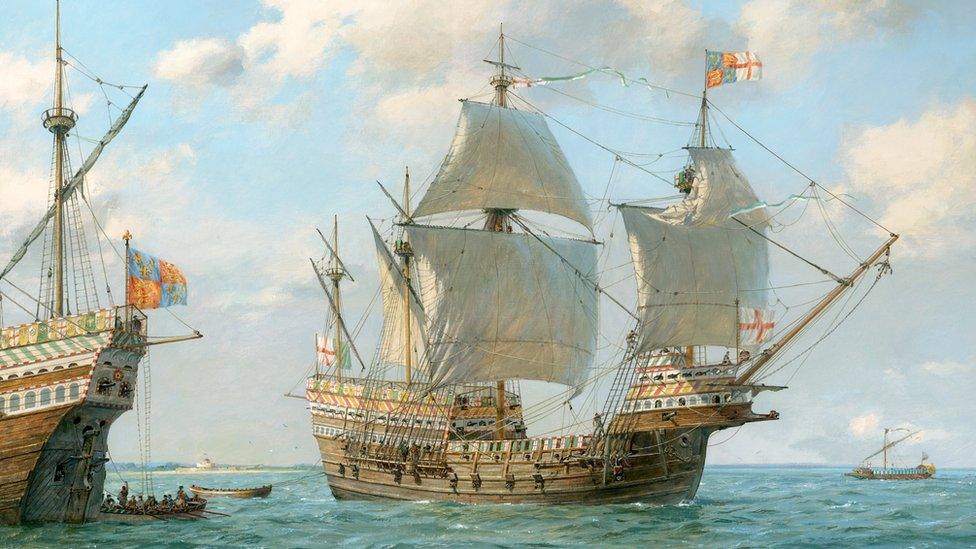The Gloucester shipwreck may be 'better than Mary Rose', expert says
- Published
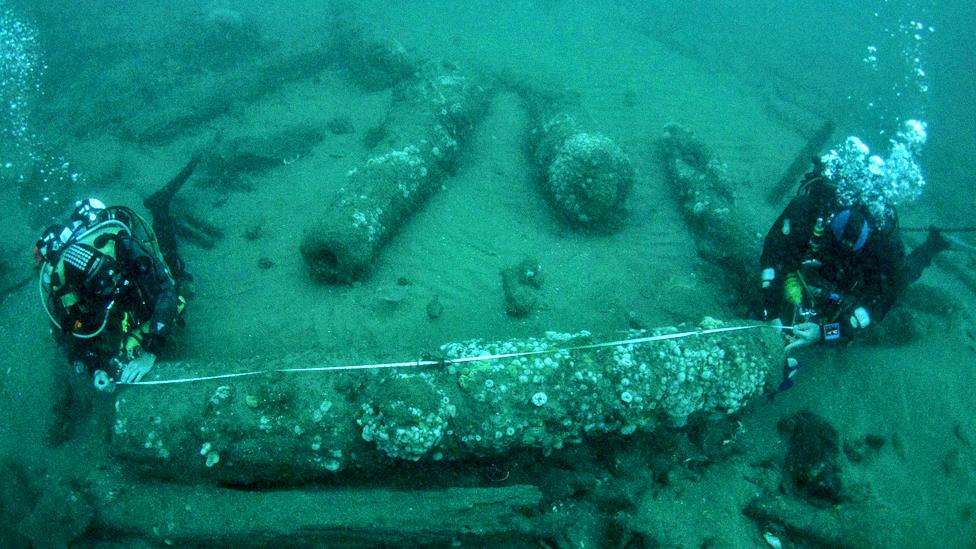
The 340-year-old Gloucester warship was discovered after a cannon was spotted on the seabed by divers
Objects from a royal shipwreck are "comparable, if not better" than the Mary Rose, a conservation expert said.
The discovery of the Gloucester, which sank off the coast of Norfolk in 1682, almost killing a future king, was made public last month.
Items recovered from the wreck have been sent to York for experts to begin their restoration.
Ian Panter from York Archaeology said he felt "privileged and honoured" to be working on the project.

Head of conservation at York Archaeology Ian Panter said the organisation had experience in maritime restoration
Norfolk-based printer brothers Julian and Lincoln Barnwell, together with their late father, friend James Little and another unnamed friend, spent four years on diving expeditions to find The Gloucester's watery grave.
It ran aground on sandbanks, nearly killing the Duke of York, who went on to become King James II of England.
The divers first discovered its whereabouts in 2007, but it was kept a secret for 15 years until precious artefacts were rescued from the seabed.
Norwich Castle Museum is planning an exhibition of some of the finds next year.
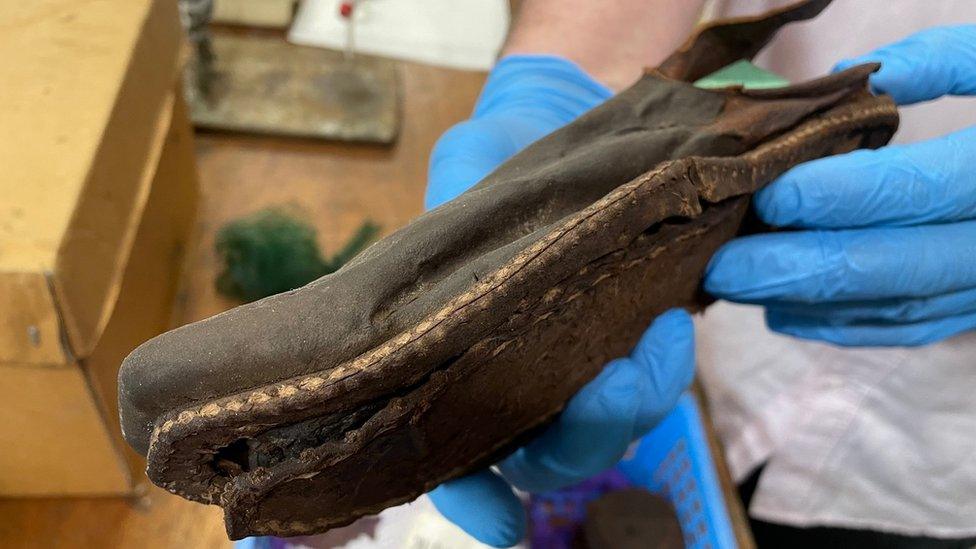
Several different artefacts were found such as ceramics and textiles, including a shoe
Mr Panter, head of conservation, said the York laboratory was one of only two in the country that would be able to handle the items.
He said: "I get very excited by the stuff from the Gloucester because it's a range of material you don't normally see.
"With the Gloucester we're looking at unique artefacts from a certain class of people, things that are being used by the crew, things that are being used by the royal passengers, it's high status stuff.
"I started my career working on the Mary Rose and these are comparable if not better."
The Mary Rose was King Henry VIII's flagship that sank while leading an attack on a French invasion fleet in 1545.
Around 19,000 artefacts were found on board after it was famously raised from the seabed of the Hampshire coast in 1982.
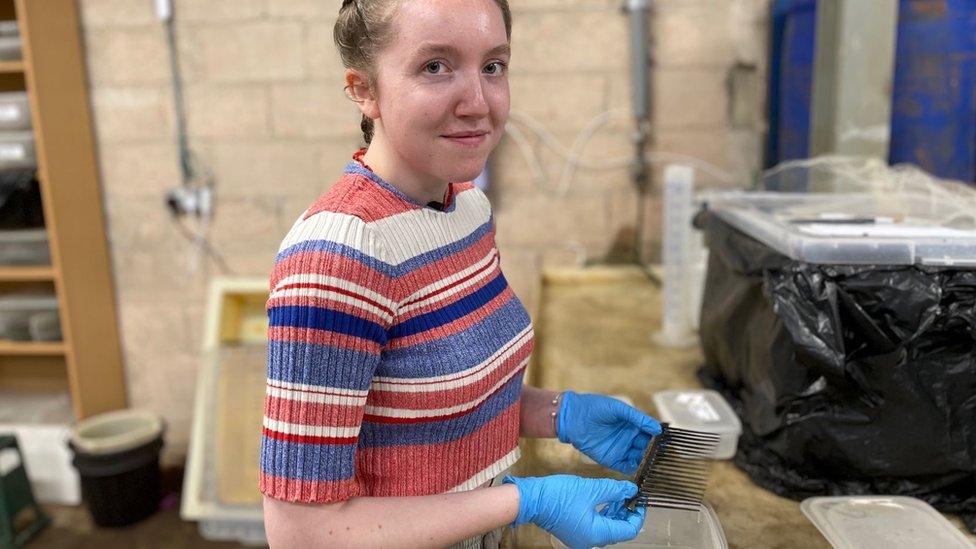
The desalination of the combs found on the Gloucester can take months, conservator Scarlett Crowe said
Scarlett Crowe, assistant conservator at York Archaeology, said a package of about 10 combs was one find from the wreck the team was working on.
"Most of them were incomplete apart from one which was a double-sided nit comb, the rest of them were large, possibly for wigs which were popular at the time," she said.
Ms Crowe said it was discovered they were made of horn and were then desalinated.
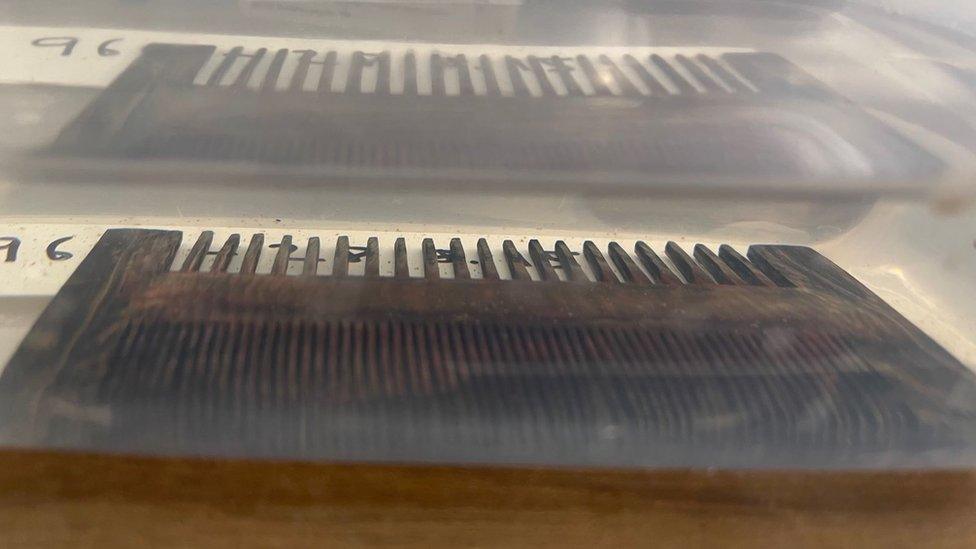
The combs were separated into layers before being put back together
The team were using a specific acid to remove the iron from the combs and then they will be dried, ready for display.
Ms Crowe said "it's humidity that we are concerned about when it is in exhibition" as it can react with the iron which they are unable to extract.
"To have such a large shipwreck to work on it's fantastic, I feel privileged to work in these objects," she added.

The team has to use various drying methods once the items have been worked on

Find BBC News: East of England on Facebook, external, Instagram, external and Twitter, external. If you have a story suggestion email eastofenglandnews@bbc.co.uk, external
- Published15 June 2022

- Published10 June 2022
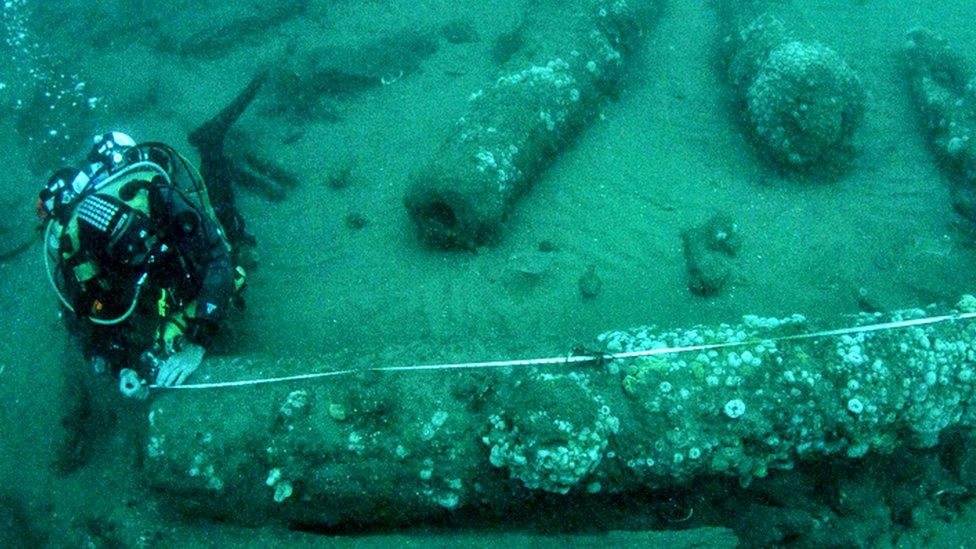
- Published12 June 2022

- Published5 May 2021
